WINE AND LETTERS (VI) – Roger Scruton “I Drink Therefore I am”.
Roger Scruton I Drink Therefore I am.
The randomness of the readings that underpin these letters leads us to deal now with another book written in English, and another posthumous tribute. It is “I Drink Therefore I am”, subtitled “A Philosopher’s Guide to Wine”, by the English philosopher Roger Scruton, first published in 2009. English is reiterated because the author boasted about it, although it has been said that his was nostalgia for an England that never existed, which is certainly possible in the light of what this book offers us. He died in the ill-fated year 2020. A controversial man and a friend of controversy, we are not going to deal with his public figure here; we are only interested in his peculiar opinions on wine -he was a journalist critic for a time-, in the book we are commenting on.
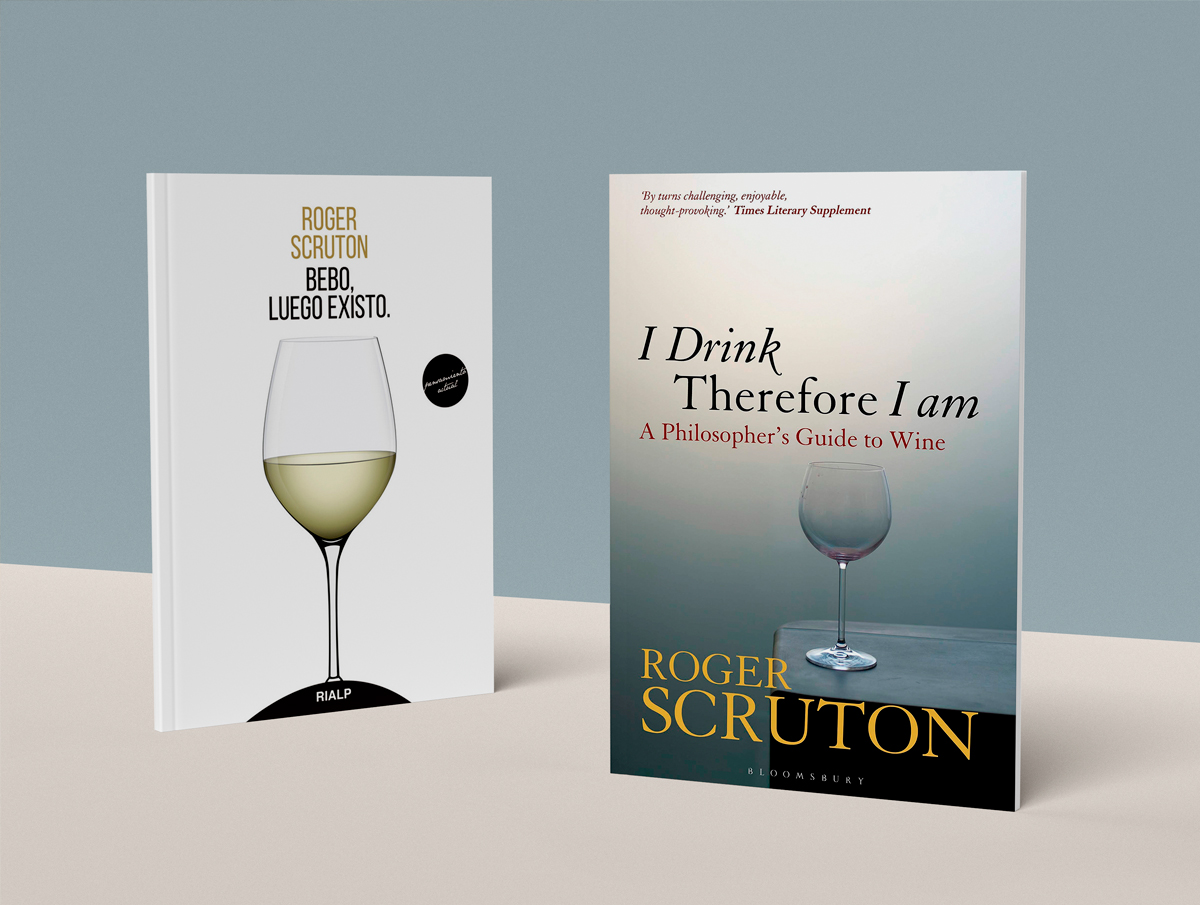
There is a Spanish translation by Elena Álvarez published in 2017 by RIALP, with the title “Bebo, luego existo”. It does not include the subtitle of the original. Perhaps it would have been appropriate to do so. Every Englishman and, in general, every Monty Python fan, knows -and the author himself tells us so-, that the title of the book copies a refrain from a song by this groundbreaking group called “Bruce’s Philosophers’ Song” (https://www.youtube.com/watch?v=l9SqQNgDrgg), which reviews the drunkenness of the great philosophers, be they ethylic or mental, or even flatulent, as in the case of Descartes, the one of “‘I think, therefore I am’…”.
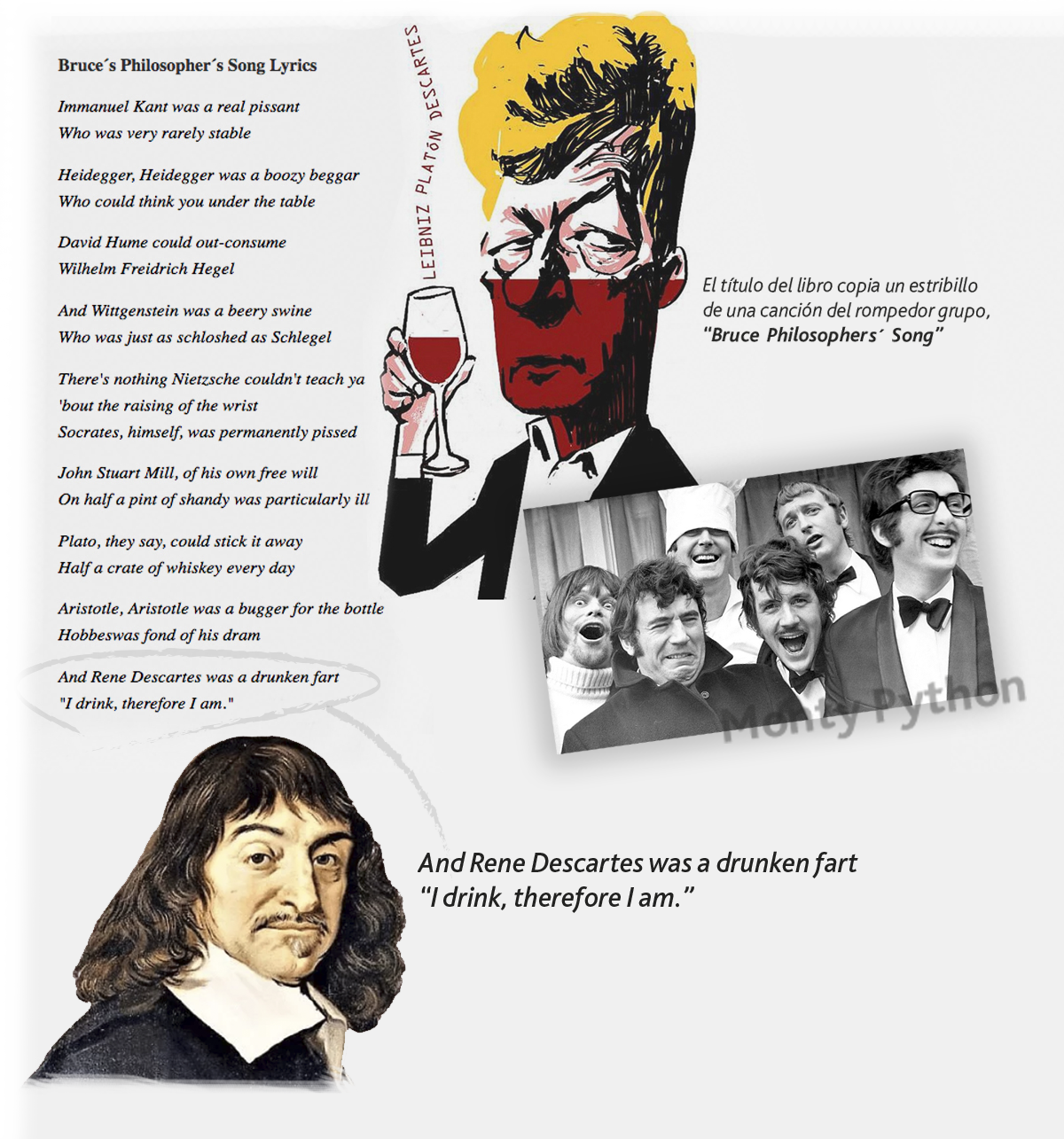
Indeed, in the core of the book (Chapter 5), the author analyses the second part of the syllogism: “Therefore I am”. In these three words, he tells us, are concentrated all the concepts that underlie all philosophical reflection: (i) “therefore” is “reason” (or “cause”), (ii) “I” is “consciousness” and (iii) “am” (first person singular of the simple present tense of the verb “to be”, one wonders why English speakers then complain about our irregular verbs) is “to be”. He reflects on these terms with such a profusion of arguments and so many quotations from the classics, with such precision in concepts and words, that it should in no way be taken as a joke that he concludes the following:
“For Schopenhauer, however, the ultimate reality is Will, not Self, (…) 1 have often wondered why he took this unsatisfactory path, and am inclined now to put it down to his fondness for beer. Schopenhauer was not in the habit of steadying before his face each evening the glass in which the 1 confronts its own reflection”.
The first part of the syllogism, i.e. the pure act of “Bebo” (“I Drink”), does not deserve in his view complex philosophical reflections. Drinking is as natural as thinking. He does observe, however, the possible existence of various forms of “drinking”. It seems that the way of drinking has no influence on the inexorable conclusion of “existing”. But perhaps it destroys the assimilation to thinking. There are ways of drinking in which rationality is absent. He literally tells us: “while we are familiar with the adverse effect of drink on an empty stomach, we are now witnessing the far worse effect of drink on an empty mind”.
The book has two clearly differentiated parts, although they are offered intermingled. On the one hand, the philosophical reflections, which are not easy to follow; on the other, the wine-making considerations, which are very stimulating to follow, and which are sprinkled with such culture, clarity of judgement and a sense of humour as serious as it is typically English, that they are pleasantly palatable.
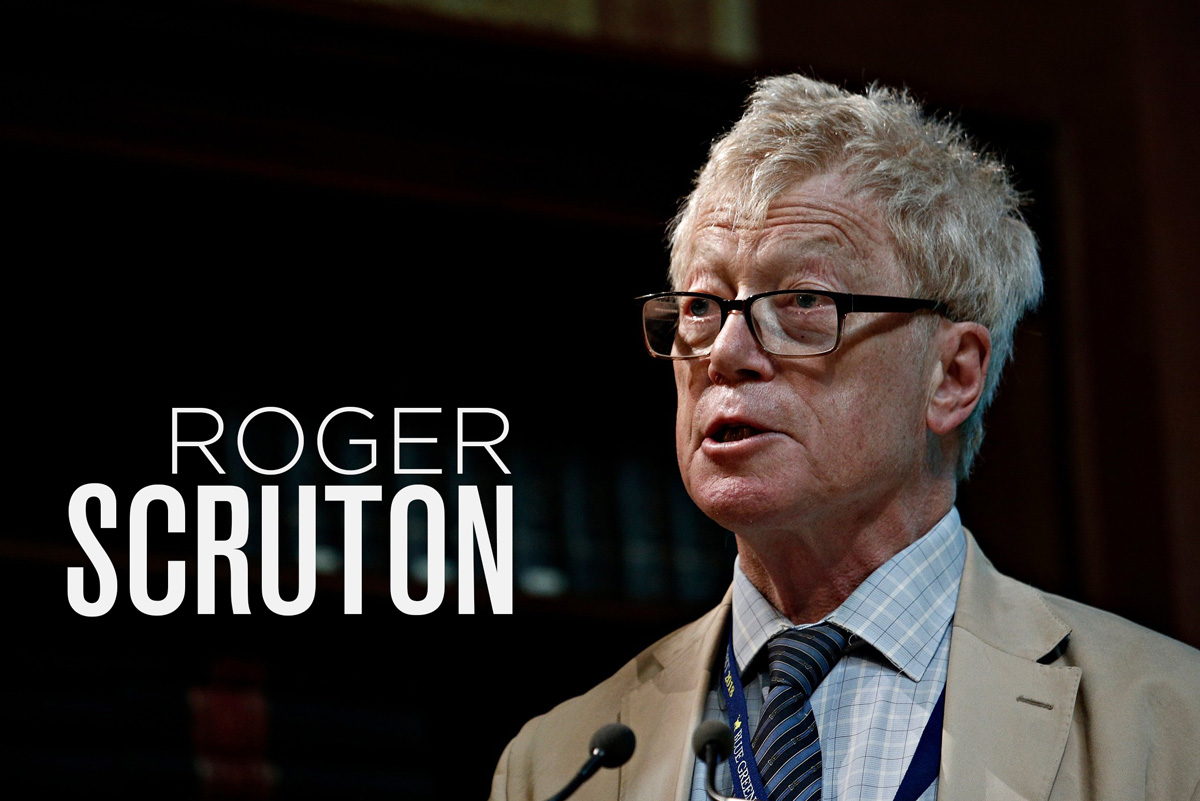
It begins with the initiatory journey that leads the author to become, according to his trademark sense of humour, a “wino”. Next our wino takes us on a literal Tour de France and then gives us news from other parts of the globe. As is only natural, he dwells particularly on countries in the Commonwealth orbit. His news items do not seem to come from a direct knowledge of the terrain, except in the case of France, although this does not include Burgundy, which he admits he has never visited. They are therefore navel-gazing trips around a glass of wine, around his own ability to inhale vapours and exhale metaphors and finally around his enormous culture; he states unabashedly: “Travel narrows the mind, and the further you go the narrower it gets”. This lack of contact with the land does not prevent him from being a staunch defender of the “terroir”, in which he includes all the culture he holds dear. (The “soil” is not only the physical mixture of limestone, mulch and humus, but as Jean Giono, Giovanni Verga or D.H. Lawrence would describe it: “Nurse of passions, stage of dramas, and habitat of local gods”.
I cannot dwell on such comments; it is enough for us to deal with what he says next about Spain. He devotes about three pages to us, almost two of which are devoted to socio-political questions, on the basis of the reading of Invertebrate Spain, a book published by the Spanish philosopher José Ortega y Gasset in 1921. We will skip these questions and stick to the wine.
He graciously prides himself on knowing our country as intimately as Debussy – “who went to the Iberian Peninsula once for a weekend, saw his mistake, and fled back to Paris” – because he rode his rickety motorbike for a couple of days through the Pyrenees without finding anything worth mentioning.
So he also turns to his navel. In his imagination, Spain is still unspoilt, and to think of it – even more, to drink it – is a source of uncontaminated joy. “The villages and bodegas, that I visit in my glass are whitewashed, flagstoned, perched on steep inclines, with the parched, mean, gritty, clay-bound soil falling form their tight perimeters like terracotta skirts”.
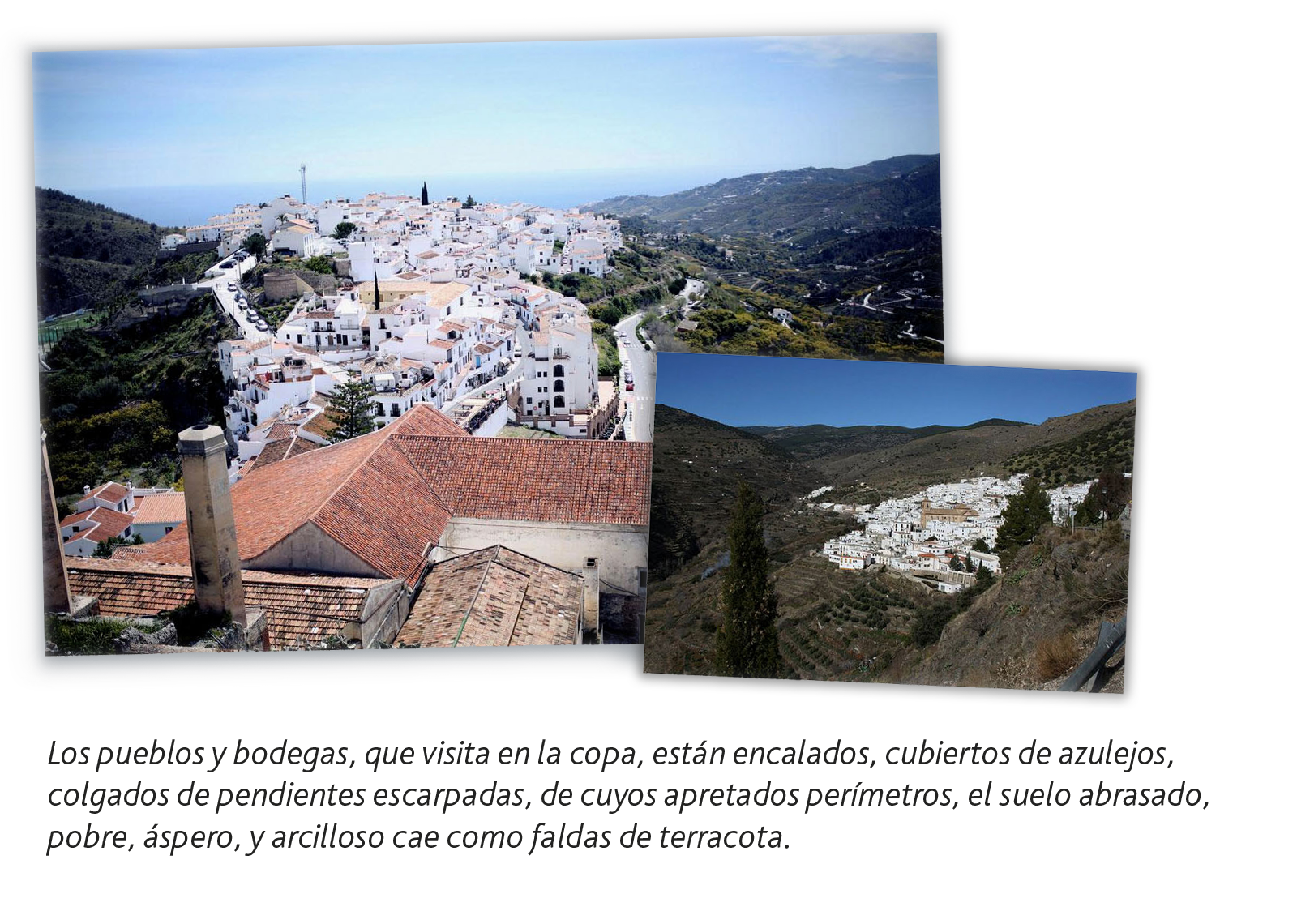
Thus, the same romantic clichés of Merimée and company that the musician had. Debussy may, however, also have had undoubtedly authentic references to compose Prelude number 3 of Book 2 (between 1912/13) – entitled precisely, and precisely in Spanish, “La puerta del Vino” (The Wine Gate, an inner gate within the Alhambra) – since in it one can perceive something of Granados’s Danzas Españolas or Albéniz’s Iberia, both published a few years earlier, although frenchified with the natural impressionism and rhythm of Ravel’s left hand.
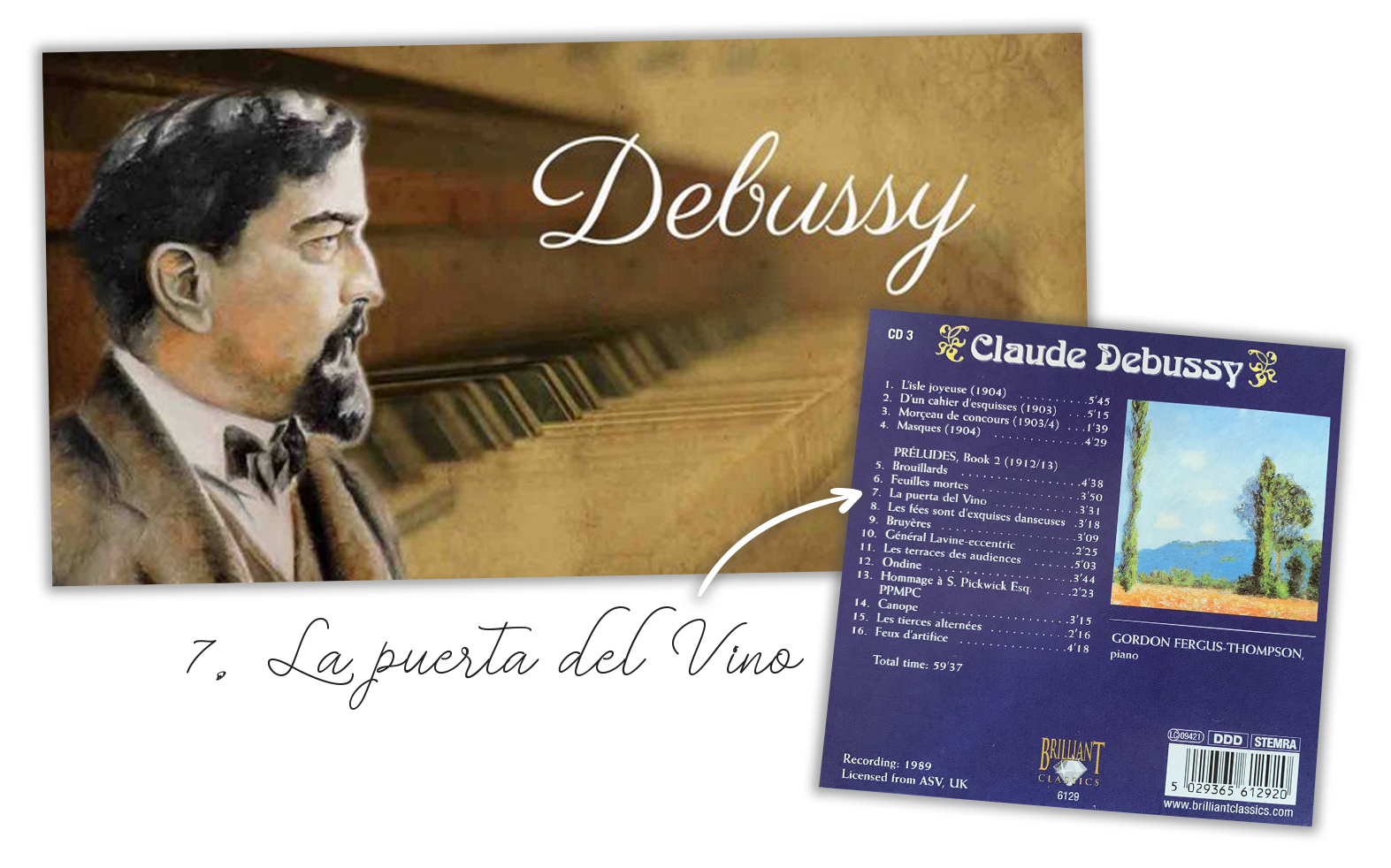
No doubt Scruton also had authentic references in the cups around which he travelled.
In our country, he is mainly concerned with Rioja, which he says is a French invention. It seems to be true that the development of wine in Rioja was linked to the time when the phylloxera epidemic had wiped out the vineyards of Bordeaux. However, he goes on to say: “The Spanish bodega represents a business rather than a place, and is less a vineyard than a factory, often buying in grapes from all over the region”. Here you have to go to the “business” rather than the “terroir”, so the wine will never take you to a small area of given soil as it does in France (although we know that this “given soil” can include Joan of Arc herself).
This being the case, it does not seem to detract from the fact that in the “Rioja winery” grapes from all the land of the designation are blended, as long as the properties of each varietal are not artificially altered. Rioja is also a “terroir” as a whole. We have already talked about this when referring to the biodiversity of the Rioja soil, and there will be an opportunity to expand on this.
The red Rioja, continues the author, is made from Tempranillo, blended with smaller amounts of Garnacha, Mazuelo and Graciano. It is aged in oak barrels, usually American, which explains its vanilla flavour and long finish. It is officially classified into four types according to its ageing in cask and bottle: plain Rioja, Crianza, Reserva and Gran Reserva. The latter can only be made in the best vintages, and to drink it at its best one must wait for ten years. He ends up with his customary imagery: A glass of old Gran Reserva is like a vision into a candlelit crypt where gaudy archbishops doze among vessels of gold.
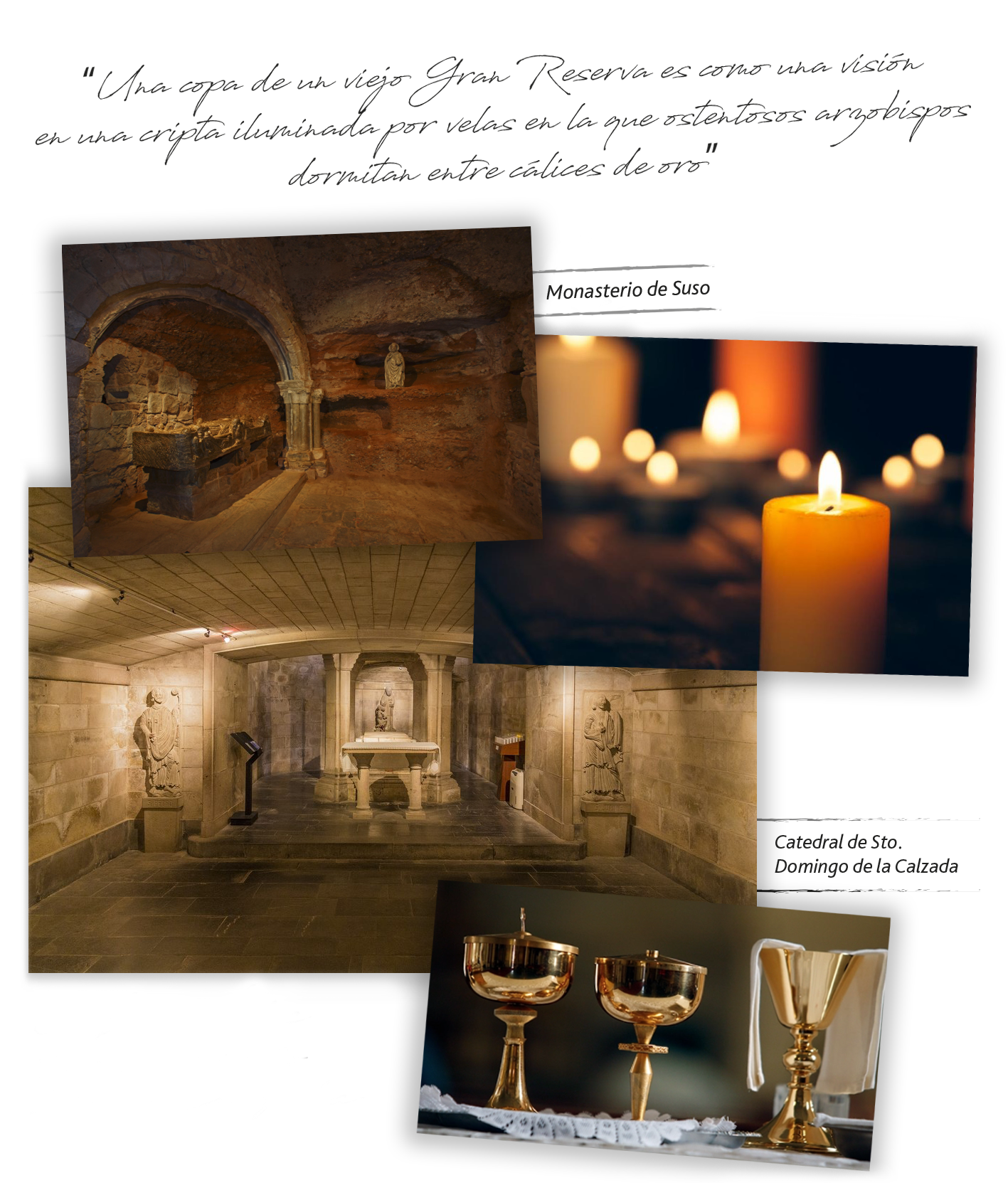
The author concludes all his references to Spanish wines by noting that “the combination of oak and Tempranillo works in the uniquely favoured region of Rioja (favoured in particular by those winemakers from France); but it doesn’t work in the Valdepeñas, where ‘gran reserva’ may often connote an overdose of flakey make-up”. He adds that in other areas Tempranillo is blended with more northerly varieties, or excluded altogether. Among the latter, he highlights as most interesting the Bierzo variety with its ancient vineyards along the pilgrimage route to Santiago de Compostela, planted with the indigenous variety “mencía”, which “thanks to a poor, sunburnt soil is rich in minerals, with a dark blood colour and a melancholic taste, like a bittersweet love song by Lorca”. However, such vineyards grow on chalky foothills so steep that they must be worked by donkey, so that, in keeping with his poetic licence, he concludes that whenever he has offered “a share of this wine to Sam the Horse he has turned quickly away, as though hearing the last neighs of the many equines who have crashed to their death for the sake of this bloodstained remnant of their labour”.
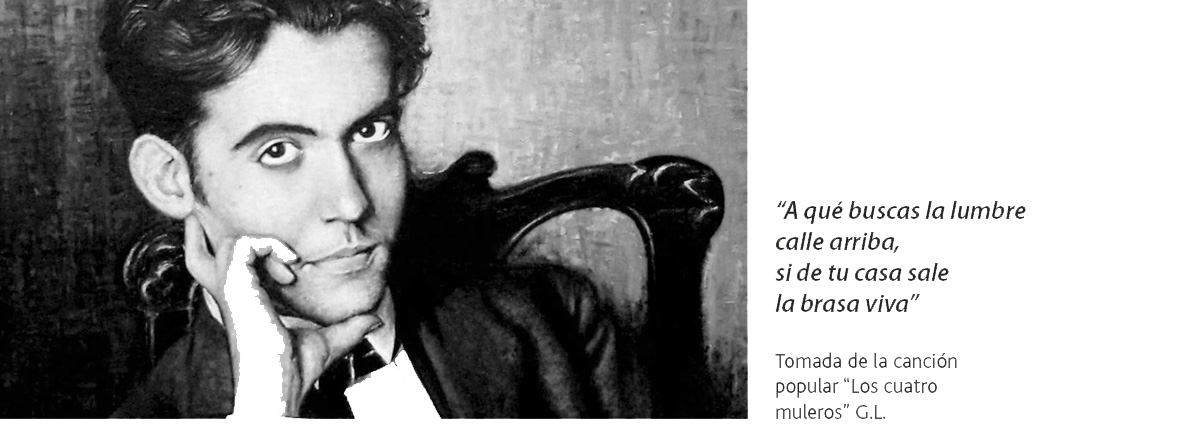
The book then goes into abstract considerations again, such as the meaning of wine, or the meaning of the complaints or reproaches made against it, especially the one about abuse (alcohol, in short). The book is not exactly short, 198 pages in English, which become, as seems inevitable, 295 in its translation in only slightly larger print. It is therefore impossible to summarise it, but three important ideas are worth highlighting: (i) wine intoxication is a sensory rather than an aesthetic experience, (ii) it is easier and more tempting to prohibit than to educate; the tendencies to prohibit result from the puritanism that has been defined (H.L. Mencken) as “the obsessive fear that someone, somewhere, might be happy”, and (iii) wine consumption should be guided, like life, by the sayings written above the door of the temple of Apollo at Delphi: “Know thyself” and “Nothing in excess”, both naturally related, because practising the latter is a prerequisite for attempting the former.
Finally, he gives us some ideas about food pairing (“maridaje”), a word which, in Spanish, as we know from the previous issue, is reviled by everyone, but for which there is no adequate substitute. What to drink with what? Now, the object of the pairing here is not the material food, but the spiritual food. That is, which wine goes well with which philosopher (or vice versa). Of course, the selection is subjective. A few brief examples: a good Bordeaux is perfect to accompany the reading of Plato’s Republic; no wine, but large quantities of water plus a Spartan austerity will be necessary to swallow Aristotle’s Metaphysics, the driest book ever written; a Burgundy of 1964 is very suitable for reading Sartre, since re-reading will then be as impossible as finding the wine again. He reserves for us the honour of assigning us Leibniz, with a Crianza or a Rioja Reserva, opened an hour or two in advance to allow the archbishop’s flavours to breathe.

I hope I have given you good reasons to read this book, which is as interesting, and even amusing, as it is demanding. I conclude by acknowledging that since I read it, I feel, every time I raise my glass and confront my “I”, more conscious of being, of pleasure and of the pleasure of sharing.




Leave a Reply
Want to join the discussion?Feel free to contribute!